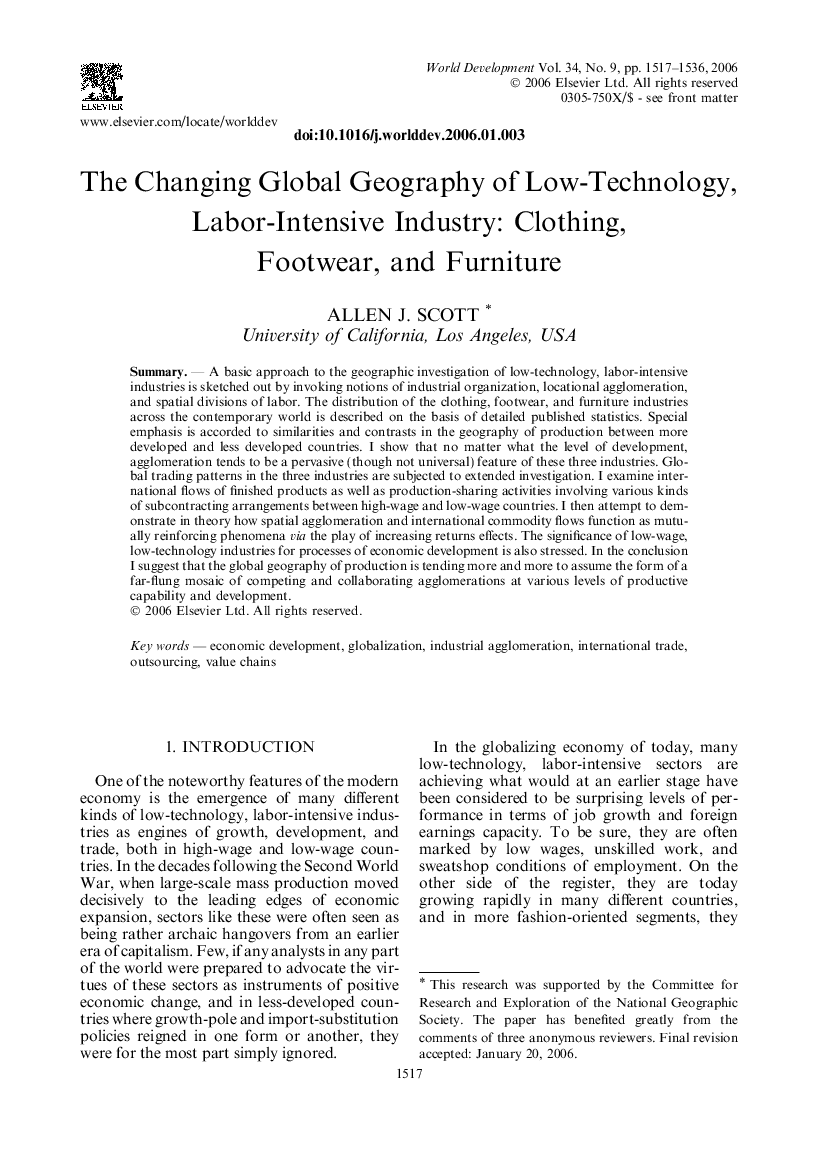| Article ID | Journal | Published Year | Pages | File Type |
|---|---|---|---|---|
| 992575 | World Development | 2006 | 20 Pages |
SummaryA basic approach to the geographic investigation of low-technology, labor-intensive industries is sketched out by invoking notions of industrial organization, locational agglomeration, and spatial divisions of labor. The distribution of the clothing, footwear, and furniture industries across the contemporary world is described on the basis of detailed published statistics. Special emphasis is accorded to similarities and contrasts in the geography of production between more developed and less developed countries. I show that no matter what the level of development, agglomeration tends to be a pervasive (though not universal) feature of these three industries. Global trading patterns in the three industries are subjected to extended investigation. I examine international flows of finished products as well as production-sharing activities involving various kinds of subcontracting arrangements between high-wage and low-wage countries. I then attempt to demonstrate in theory how spatial agglomeration and international commodity flows function as mutually reinforcing phenomena via the play of increasing returns effects. The significance of low-wage, low-technology industries for processes of economic development is also stressed. In the conclusion I suggest that the global geography of production is tending more and more to assume the form of a far-flung mosaic of competing and collaborating agglomerations at various levels of productive capability and development.
